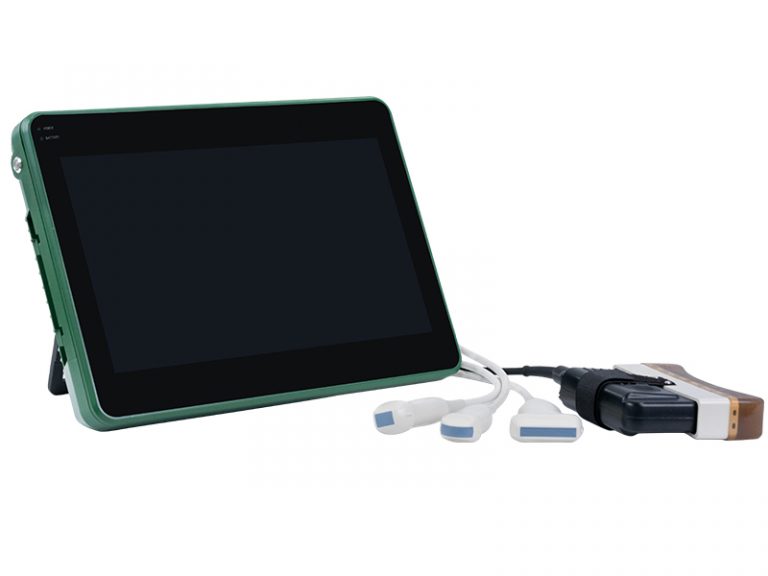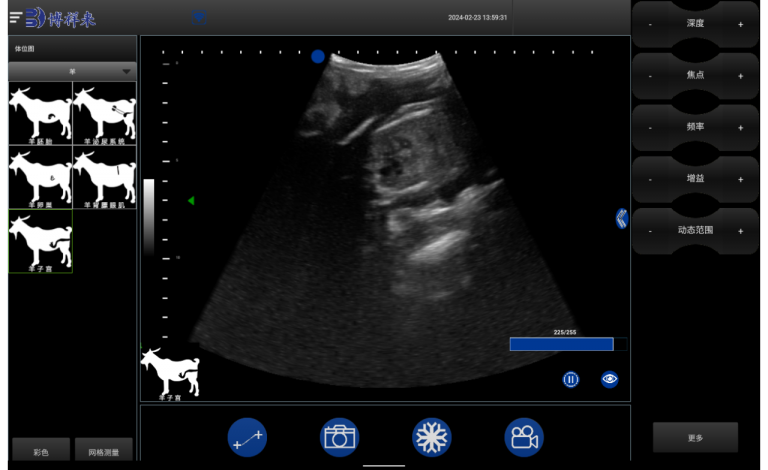Evaluating Stress Reduction When Using Ultrasound Pregnancy Tools in Nervous Animals
For livestock producers and veterinarians, monitoring reproductive performance is central to herd health, productivity, and profitability. Yet, one of the ongoing challenges in reproductive management, particularly in sensitive or high-strung animals, is the anxiety and stress animals often experience during diagnostic procedures. Traditional pregnancy checks, such as manual palpation or blood tests, can be invasive, uncomfortable, or require physical restraint, exacerbating animal stress. In recent years, however, the adoption of ultrasound pregnancy tools has offered not only diagnostic accuracy but also significant benefits in reducing animal stress, especially for nervous species or individuals.

In this article, I’ll explore how ultrasound pregnancy tools contribute to stress reduction in nervous animals, explain the underlying mechanisms, and share how many veterinarians and producers worldwide are embracing this technology to improve animal welfare and farm efficiency.
Understanding Animal Stress in Reproductive Examinations
Animals, particularly prey species such as cattle, sheep, goats, horses, and pigs, have an inherent sensitivity to stressors in their environment. Routine veterinary procedures can trigger a fight-or-flight response due to physical restraint, unfamiliar handling, or discomfort caused by invasive diagnostic tools. This acute stress can have several consequences:
-
Elevated cortisol levels
-
Increased heart and respiratory rates
-
Decreased reproductive efficiency
-
Compromised immune function
-
Potential injuries from resistance or panic behavior
For example, nervous dairy cows may exhibit heightened sensitivity during rectal palpation, while high-strung horses might resist restraint or react dangerously during reproductive exams. Chronic stress not only reduces productivity but can negatively affect pregnancy outcomes, fetal development, and even long-term herd behavior patterns.
It’s within this context that ultrasound pregnancy tools have gained increasing attention for their ability to provide accurate diagnostics while minimizing stress-related complications.
The Advantages of Ultrasound Pregnancy Tools
Unlike traditional methods, ultrasound provides a non-invasive, visual assessment of reproductive organs and fetal development. The core features contributing to reduced stress include:
1. Minimal Invasiveness:
While some ultrasound exams involve rectal or transvaginal probes, external abdominal ultrasound can often be used, especially in early pregnancy detection for sheep, goats, and smaller animals. This reduces physical discomfort dramatically compared to palpation or invasive sampling.
2. Shorter Handling Time:
With portable devices like modern veterinary ultrasound machines, experienced operators can complete examinations quickly, reducing the duration animals spend restrained or confined.
3. Less Restraint Required:
For many species, gentle handling or chute restraint is sufficient for ultrasound scanning. The absence of forceful restraint minimizes anxiety, struggling, or injury risk.
4. Real-Time Visualization:
Ultrasound provides instant feedback. Veterinarians can diagnose, monitor, and explain findings without the need for repeated physical manipulations, further limiting stress episodes.
5. Adaptability Across Species:
Nervous animals such as alpacas, llamas, deer, zoo animals, or wild species are more amenable to ultrasound exams because these tools can be adapted for use with minimal contact.
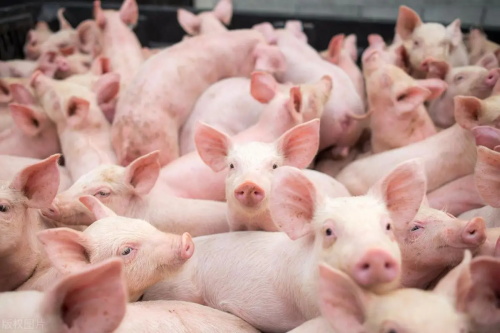
Case Studies in Stress Reduction: Field Experience
Dairy Cattle
In a study conducted by the University of Wisconsin, veterinarians compared cortisol levels in dairy cows undergoing traditional rectal palpation versus those evaluated with ultrasound. The cows assessed with ultrasound had significantly lower cortisol spikes and returned to baseline levels faster than those subjected to palpation (Schuenemann et al., 2020).
Small Ruminants (Sheep & Goats)
Small ruminants are notoriously sensitive to stress, which can affect their pregnancy maintenance. Portable ultrasound devices allow farmers to scan does and ewes in gentle positions without prolonged restraint. According to research by the UK Sheep Veterinary Society (2022), flocks using transabdominal ultrasound reported better fetal retention rates and lower abortion incidents, partially attributed to reduced procedural stress.
Equine Reproductive Practice
Nervous mares, especially maiden or performance horses, often react poorly to transrectal palpation. However, with handheld or arm-mounted ultrasound devices, veterinarians can conduct pregnancy checks quickly with minimal rectal entry depth, leading to calmer exams. Equine reproductive centers in Germany have widely adopted ultrasound-first protocols for high-strung mares, reporting not only reduced sedation use but also improved examination safety for veterinarians (Hannover Veterinary Reproductive Center, 2023).

How Ultrasound Directly Reduces Stress
The biological basis for stress reduction during ultrasound lies in multiple aspects:
Sensory Perception:
Ultrasound does not activate nociceptors (pain receptors) in the same way as manual palpation or sampling needles. The soft probe movements, even internally, are generally less discomforting than more forceful manipulations.
Short-Term Restraint:
Shorter restraint sessions mean animals spend less time in an elevated arousal state. Quick diagnosis allows for prompt release, reducing sustained activation of the hypothalamic-pituitary-adrenal (HPA) axis.
Predictable Procedure:
Animals become habituated to non-painful, predictable procedures. Over time, regular exposure to gentle ultrasound exams can reduce fear-based responses entirely, contributing to calmer long-term behavior.
The Rise of Portable Ultrasound in Stress-Sensitive Herds
Modern veterinary ultrasound equipment has evolved to prioritize both diagnostic accuracy and field usability. Devices like the BXL-V50 Portable Veterinary Ultrasound Scanner offer several features directly aimed at minimizing animal stress:
-
Lightweight Design: Easily carried into pens, pastures, or stalls
-
Waterproof Casing (IP56 rated): Withstands outdoor and barn conditions
-
High-Definition Display: Provides instant, clear imaging
-
Extended Battery Life (7+ hours): Supports multiple exams without interruption
-
Transducer Variety: Allows switching between rectal, vaginal, or transabdominal probes
On farms where animals are particularly nervous or handled infrequently, these portable solutions enable veterinarians and technicians to approach animals quietly, minimize restraint duration, and complete exams efficiently in familiar environments.
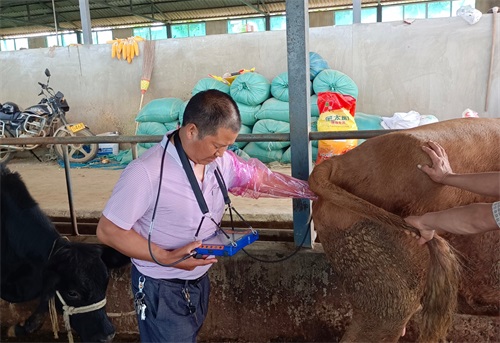
Beyond Pregnancy: Broader Benefits for Nervous Animals
While this discussion focuses on pregnancy diagnosis, the stress-reduction advantages of ultrasound apply across multiple veterinary procedures:
-
Uterine health assessments postpartum
-
Monitoring ovarian activity for breeding programs
-
Fetal viability checks
-
Early detection of reproductive pathologies
-
Guiding artificial insemination or embryo transfer
Because ultrasound is gentle and quick, these procedures can be integrated into regular herd health programs without compromising animal welfare or increasing behavioral problems related to veterinary handling.
Human Safety and Stress Reduction
An often-overlooked benefit of ultrasound in nervous animals is the increased safety for veterinarians and handlers. When animals remain calmer, the risk of kicking, biting, or sudden movements declines dramatically, particularly in larger or high-strung species such as horses or adult cattle. This not only protects animal welfare but also contributes to the well-being of farm staff.
In facilities working with exotic or zoo animals, ultrasound has become the standard reproductive monitoring tool precisely because it minimizes physical handling risk for both humans and animals (Cubicciotti & Munson, 2021).
Ethical Considerations and Consumer Expectations
Animal welfare has become a central concern for consumers worldwide. In many developed countries, certification programs (such as Certified Humane or Global Animal Partnership) evaluate farm practices, including stress-reduction methods during veterinary procedures. Utilizing ultrasound for pregnancy diagnosis aligns well with these welfare standards:
-
Non-invasive handling
-
Reduced need for chemical restraint or sedation
-
Minimal disruption to group dynamics in herd settings
As consumers increasingly demand ethical treatment of food-producing animals, technologies that prioritize welfare while maintaining productivity—like ultrasound—are positioned to play a growing role in responsible farming practices.
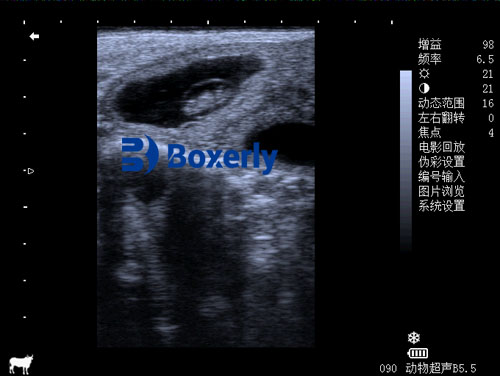
Limitations and Considerations
While ultrasound offers substantial advantages, it’s important to acknowledge its limitations:
-
Operator training is essential to obtain accurate, consistent results.
-
In some large animals or late gestation stages, deeper imaging may be challenging.
-
Equipment cost, though decreasing, can still be a barrier for smaller operations.
Nevertheless, as technology advances, these obstacles continue to diminish. Portable, durable systems like the BXL-V50 are designed to balance affordability with professional-grade functionality, making ultrasound more accessible than ever.
Conclusion
The use of ultrasound pregnancy tools represents a significant advance in balancing productivity with animal welfare. For nervous animals, the benefits are clear: less invasive procedures, shorter handling times, and calmer examinations contribute to healthier pregnancies, better reproductive outcomes, and safer working conditions for veterinarians and farm staff.
Globally, producers and veterinary professionals are increasingly adopting ultrasound-first protocols, recognizing that happier, less-stressed animals not only thrive better but also meet growing public expectations for humane farming practices. As technology continues to improve, ultrasound will remain at the forefront of ethical, effective, and stress-reducing veterinary care in reproductive management.
Reference Sources:
-
Schuenemann, G. M., et al. (2020). “Comparison of stress response in dairy cows during pregnancy diagnosis by rectal palpation versus ultrasonography.” Journal of Dairy Science, 103(8), 7432-7440.
-
Sheep Veterinary Society (UK). (2022). “Ultrasound Pregnancy Scanning: Improving Outcomes for Small Ruminants.”
-
Hannover Veterinary Reproductive Center. (2023). “Stress-Free Reproductive Exams in High-Strung Mares.”
-
Cubicciotti, D., & Munson, L. (2021). “Non-invasive reproductive monitoring in exotic species.” Zoo Biology, 40(2), 98-106.

